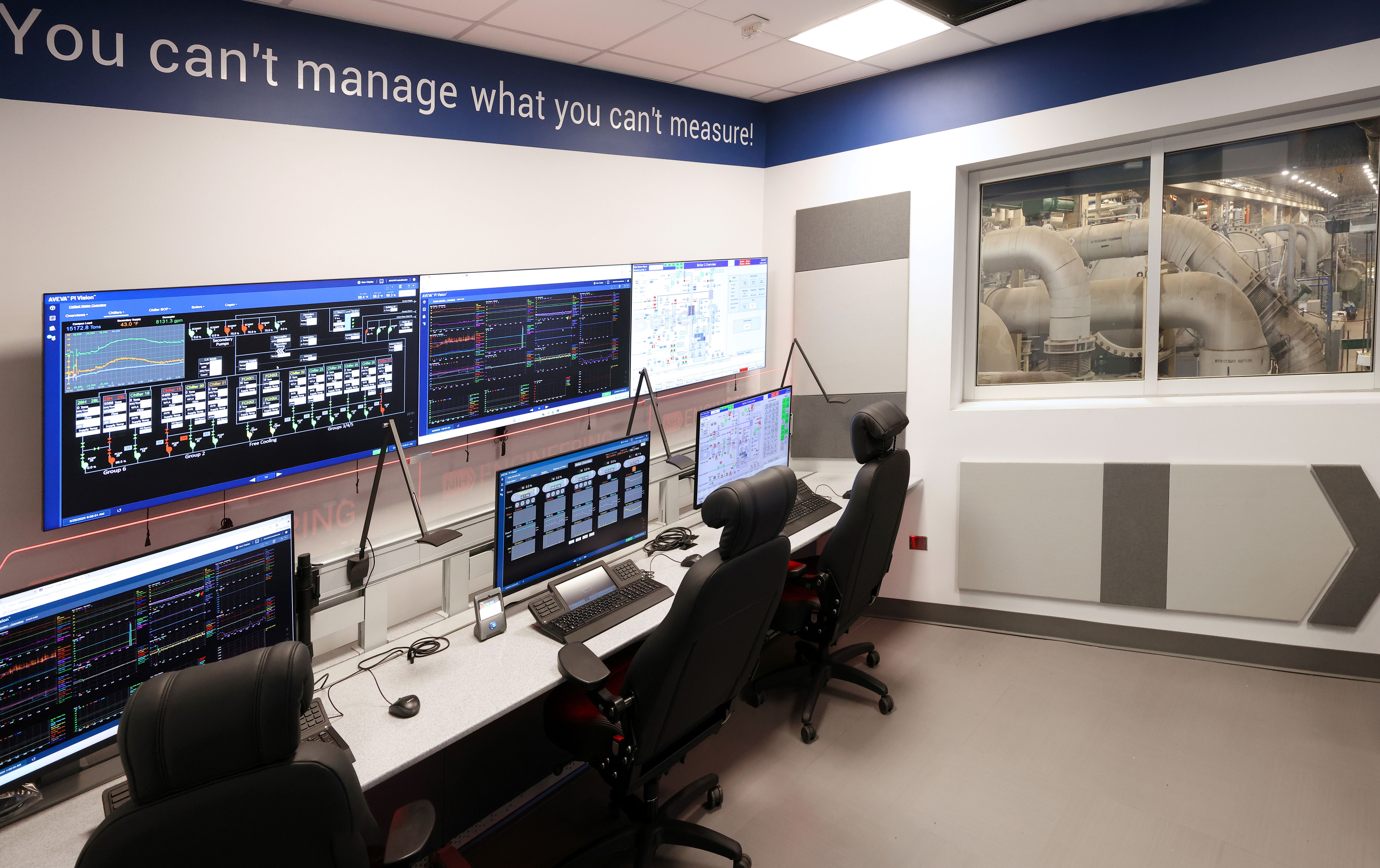Page Content
The NIH Central Utility Plant (CUP) houses five traditional gas- and oil-fired boilers and one gas turbine combined cycle that produce steam. Steam is needed for a myriad of NIH campus operations. These include space conditioning, hot water heating, medical equipment sterilization, autoclaves, animal cage and rack washing, dishwashing, and other process uses. The CUP generates and distributes ~ 2.3 billion pounds of steam per year to the NIH Bethesda campus buildings. The CUP's combined cycle gas turbine also generates 23 MW of electricity at an incredibly economic $0.04/kWh, which saves the NIH up to $14 million dollars in electrical costs each year compared to purchasing outside power.
The Central Utility Plant also houses twelve industrial refrigerant chillers that can produce up to 62,400 Tons of cooling (the equivalent of 30,000+ homes). Through the economy of scale, engineering ingenuity, and continued improvements due to the hard work of CUP personnel, that cooling is generated and transported at an average overall rate of 0.65 kW/ton, compared to the typical chiller plant rate of 0.8-1.0 kW/ton and the average household rate of 1.2 kW/ton. This feat of efficiency means that the CUP Chiller Plant alone saves the NIH approximately 90,000 MWh of electrical energy, or $12 million dollars in electrical costs per year compared to independent building package cooling systems.

The plant distributes utilities to NIH’s buildings underground via
2 miles of walkable tunnels
2 miles of concrete trench
Natural gas lines totaling ~ 3.6 miles in length
Domestic water lines totaling ~ 12 miles in length
Steam and chilled water pipe lines totaling over 7 miles
Plant Information Graphic Displays
CUP Facts and Figures
|
As of June 2025 |
Chilled Water |
Steam |
|
|
|
|
Customer | |
|
|
Area Served |
12 million sq. ft. |
12 million sq. ft. |
|
Energy Sources | |
|
|
Number of Units |
12 chillers |
5 boilers, 1 cogeneration plant |
|
Operations/Distribution | |
|
|
Design Capacity |
62,400 tons |
980 kPPH |
|
Firm Capacity |
57,400 tons |
980 kPPH |
|
Available Capacity |
60,000 tons |
980 kPPH |
|
Supply Temperature |
44 F | 373 F |
|
Return Temperature |
54 F |
N/A |
|
Supply Pressure |
110 psi |
165 psi |
|
Piping Type |
Welded steel,
schedule 80 with insulation |
Welded steel,
schedule 80 with insulation |
|
Piping Trench Length |
>7 miles |
>7 miles |
|
|
Electrical |
Steam |
|
Cogeneration Plant Capacity |
23 MW |
180 kPPH |